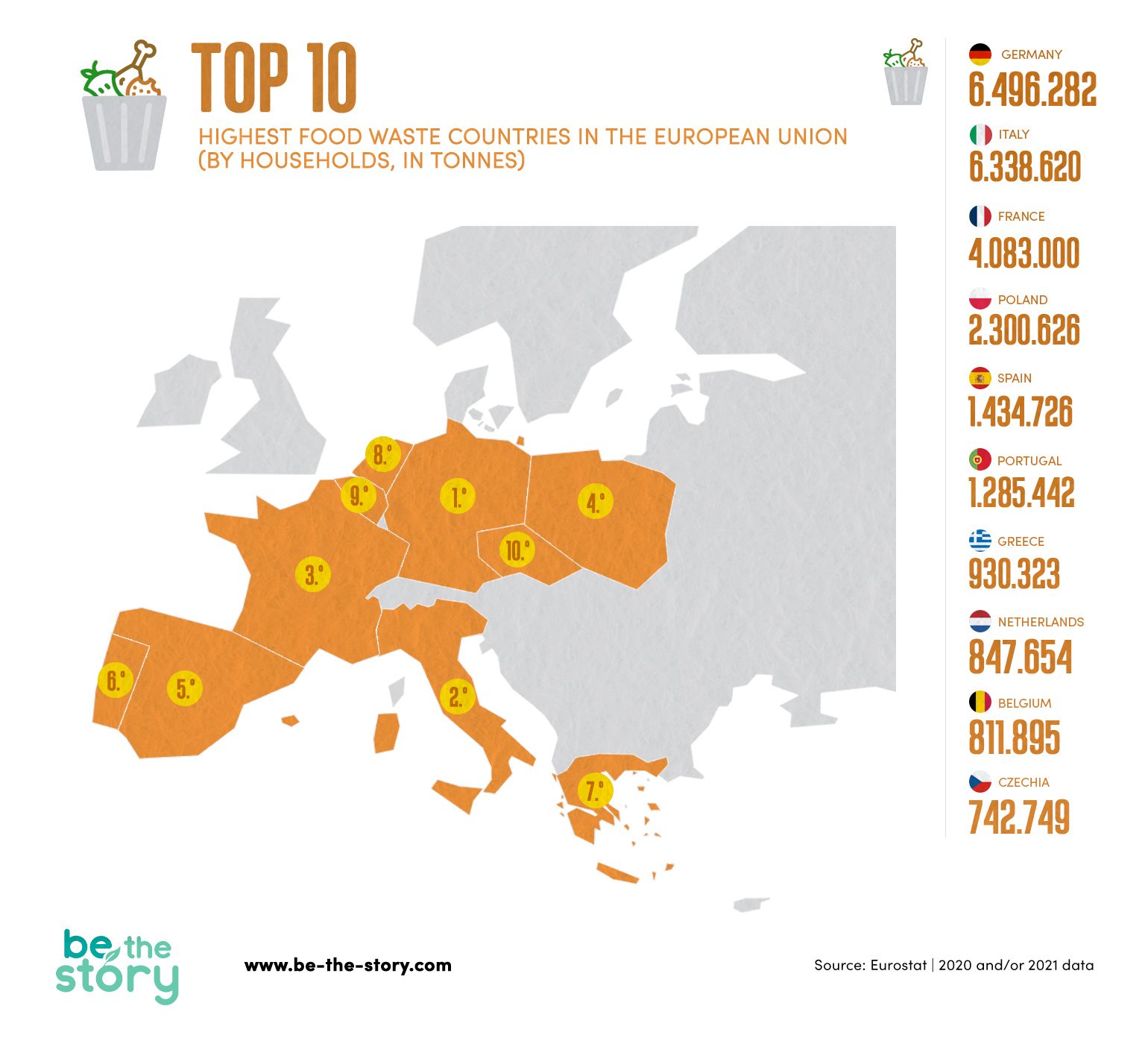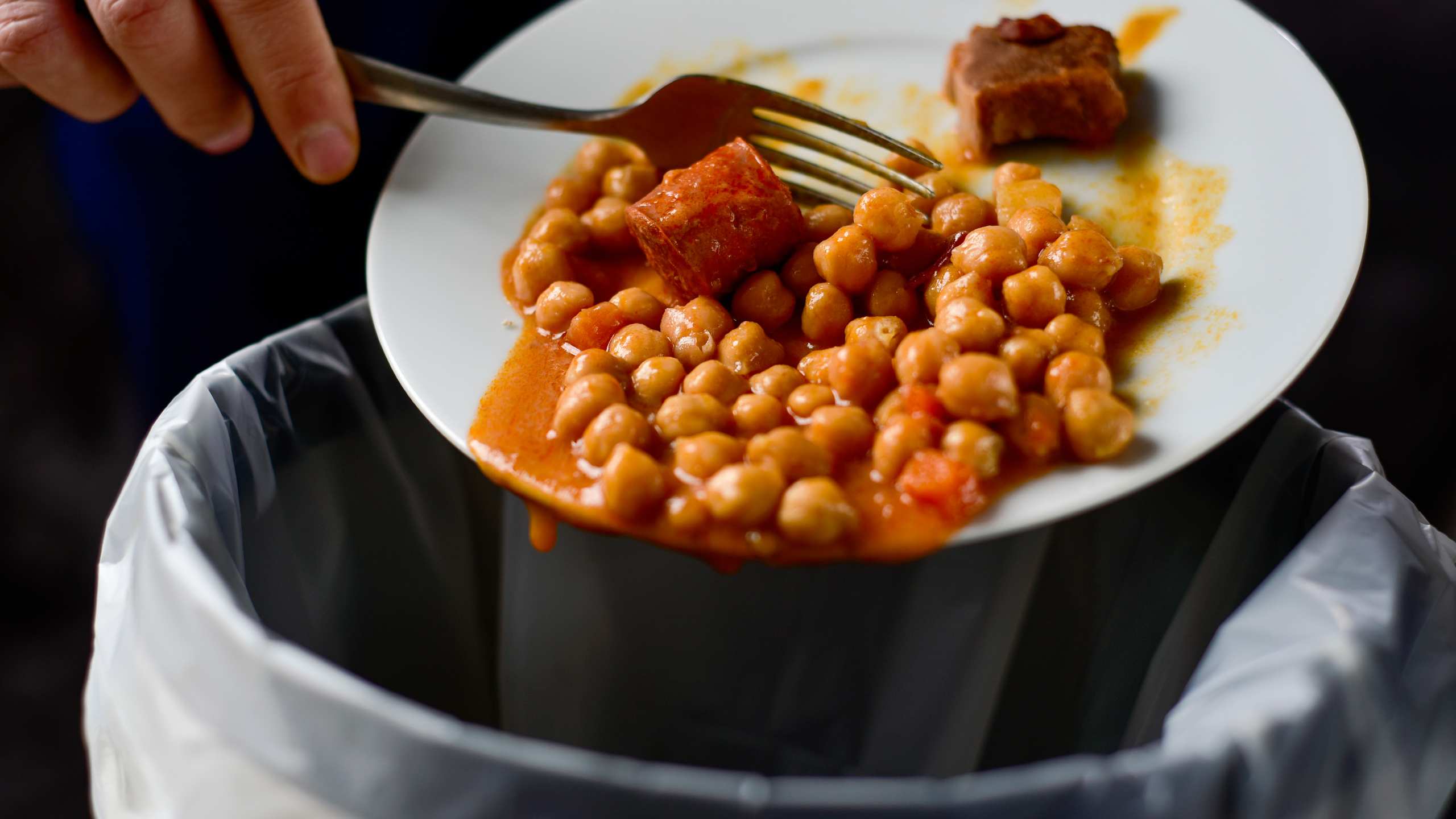Food loss or food waste? Spot the differences.
Picture a kilogram of rice, flour, or sugar. Now imagine 59 million tonnes – it’s 59,000,000,000 kg. Difficult task? That’s how much food is wasted every year in Europe. Worldwide, it’s more than 900 million tonnes.
The Food and Agriculture Organization of the United Nations (FAO) categorizes this waste in two ways:
-
Food losses
These happen during production, storage, processing and transportation. For example, when a harvest is damaged by the weather or when a glass jar of tomato pulp breaks during transportation.
-
Food waste
Occurs in the consumption phase, including in retail, in food services (like restaurants or cafeterias) and at home. For example, when a yogurt goes to waste because it has passed its shelf life.
Which European countries top the food waste ranking?
In the European Union (EU), it is estimated that 59 million tonnes of food are wasted every year. Around 54% is generated by families at home. This means that each European produces around 131 kg of food waste every year.
Do you need to digest this data? Find out in the infographic below which countries in Europe have the highest food waste.

Germany 6,496,282; Italy 6,338,620; France 4,083,000; Poland 2,300,626; Spain 1,434,726; Portugal 1,285,443; Greece 930,323; Netherlands 847,654; Belgium 811,895; Czechia 742,749. Source: Eurostat | 2020 and/or 2021 data.
Worldwide, the three highest food waste countries in 2021, namely with the most food waste originating from households, were China (almost 92 million tonnes), India (almost 69 million tonnes) and the United States of America (almost 20 million tonnes). One of the main conclusions of the United Nations Food Waste Index Report is that food waste in developing countries is not exclusive – per capita food waste is similar when comparing high, upper-middle and lower-middle income countries.
What measures are in place to reduce food waste in Europe?
The positive impact of reducing food loss and food waste has several dimensions: First, it helps the economy by reducing costs related to food waste and allowing families to save on their purchases. Second, it promotes health and fights hunger worldwide by contributing to the availability of safe, quality food. Third, it reduces greenhouse gas emissions. As such, one of the United Nations’ Sustainable Development Goals is to halve per capita food waste by 2030.
Governments, educational institutions, companies and consumers all have a role to play in achieving this goal. There are several directives and measures in place in the European Union, aiming to reduce food waste, such as:
- Encouraging food donations;
- Clearer presentation of the different dates on products (manufacturing date, packaging date, expiry date…);
- The valorisation of food waste for animal feed;
- Monitoring and evaluating each country’s progress.
Food waste management at the Jerónimo Martins Group
|



